https://www.lifegate.it/addio-alle-monovolume-trionfo-suv-crossover-renault-scenic-elettrica
- |
From minivan to electric crossover.The evolution was progressive, diluted over the years in numerous generations (at least four of the most significant), but what today is called Scenic E-Tech Electric, what Renault called “the brand's first electric family car,” is light years away from the original.So, before telling you about its latest evolution, let's briefly return to that 1996, the year of birth of the first Scenic, considered by many to be the first European compact MPV.
Born after two other iconic models of the brand, the minivan Space of 1984, and the city car Twingo of '93, Scenic, unveiled for the first time as a concept in 1991 at the Frankfurt Motor Show, arrived on the market in the mid-nineties with a mission:offering space, practicality and well-being to passengers, until then accustomed to perhaps more elegant but certainly less practical sedans.
Scenic, acronym for Safety concept embodied in a new innovative car, as if to say a car designed for safety, new and innovative.And in those years it was, with that passenger compartment that looked like a cocoon, compact on the outside (at least at the beginning, then the "long wheelbase" versions arrived), modular on the inside, full of storage compartments and practicality.
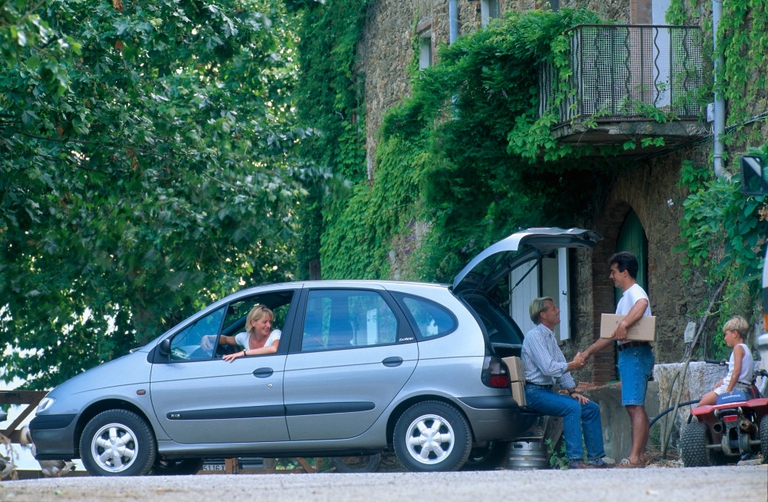
Munich 2023, the first appearance of the electric Scenic E-Tech
The latest chapter was revealed at the IAA Mobility Show in Munich last September, when with the electric version the Scenic radically changed, definitively leaving history behind.E-Tech is added to the original name, which remains more for strategy than for real affinities, while the last act of the transformation from minivan to crossover takes shape, in a completely electric version for the first time.
On the other hand, net of the fact that we are still waiting for the Government to implement the new ones car incentives 2024, announced for months and whose delay is generating a paralysis in the sales of electric cars, cars like the electric Scenic could benefit from an attractive price (the price starts from 40,050 euros and in the best of cases, thanks to the incentives, it could even be reduced to below 30 thousand euros).
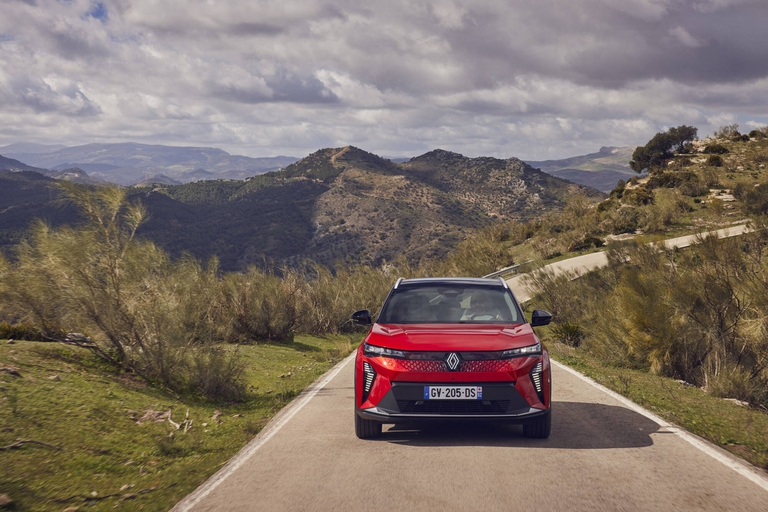
The minivans?A "race" in extinction
Of course, there are no optimal conditions waiting for the new electric Renault, with a EV market that according to the data Unrae in February it stopped at 3.4 percent;Plug-in hybrids fare no better, with 3.2 percent.But one fact clarifies the "formal" transformation of the Scenic, from minivan to crossover.There is a strong acceleration in sales of SUVs and crossovers (it is increasingly difficult to define the differences...), in almost all sizes and segments.
While the few remaining minivans, today better known by the acronym MPV, with 1.9 percent of the market are close to extinction, together with station wagons.In short, the time of the various Peugeot 806, Fiat Ulysse and Multipla and Citroen Picasso seems to have definitively passed.It's a shame, because with compact external dimensions it was possible to offer a lot of space to passengers, an aspect not always present on current SUVs and crossovers.
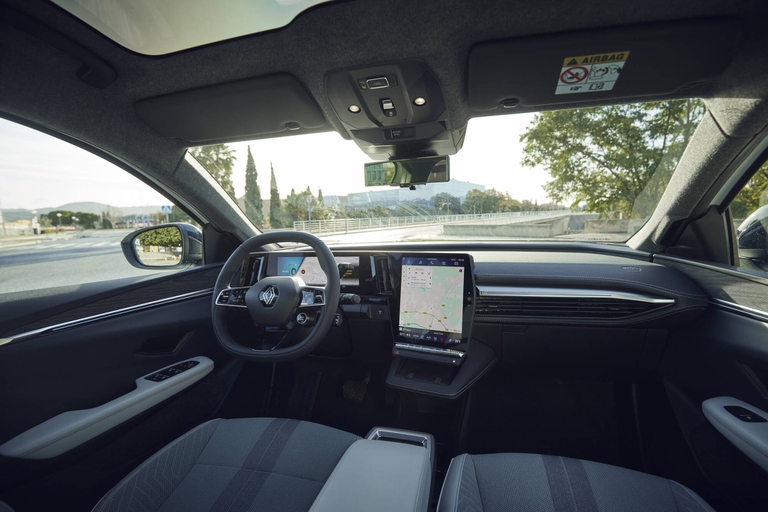
Scenic E-Tech, from home-work to family weekends
But let's get to the Scenic E-Tech Electric, the one today, the one we were able to try in Malaga, Spain.At Renault they say that the current evolution is the result of "changes in travel habits, evolution of aspirations in terms of comfort and safety, scarcity of resources, reduction of carbon footprint connected to transport".The Scenic today is a car with an electric range that varies from 430 to 625 kilometers, depending on the versions.
A car that, although grown in size, with a length of 4 meters and 47 it retains the characteristics of a family car, usable from home to work to the weekend.The recipe?An attractive design that winks at adventure (in reality the road characteristics remain those of a "normal" car), wheels placed at the corners of the bodywork (this way you get greater habitability inside), flat floor (for the benefit especially the space for the legs of those traveling in the back, very good indeed) and a compact battery.

Goodbye to leather (finally!).The circular economy is growing
That thecircular economy is also increasingly present in the automotive industry, not only is it a positive sign, but it is also the sign that starting from the design of a car, sustainability is gradually taking on greater importance.In the case of the electric Scenic, a Renault note underlines that "the vehicle is made up of at least 24 percent of materials coming from the circular economy and 90 percent of its mass is recyclable (to be honest, it is now an obligation for all producers, established by Directive 2005/64/EC)".The use of natural leather for the interior it has been completely eliminated, as have the rare earths for the electric motor.
The French company also declares 37 percent obtained from recycled materials for the metal parts (structure, chassis, axles and other chassis components) and up to 40 percent from recycled aluminium used to make doors and hood of the Scenic.Up to 80 percent recycled materials for the dashboard structure (polypropylene from industrial waste) and 43 percent of material from biological origin (kenaf) for the dashboard covering.In the passenger compartment, alongside materials of biological origin used in various percentages, for the steering wheel, glove compartments, mats, seats and seat belts, the use of materials coming from recycling of plastic bottles.
On board the electric Scenic, between massaging seats and "magic" roofs
But let's get on board the electric Scenic:the first sensation as soon as you get on board is... space and brightness, with a raised driving position, which is typical of SUVs and crossovers.The overall quality is also satisfying, while the massaging driver's seat gives unexpected well-being.Among the most obvious curiosities, the retractable door handles (they are electric, they come out as soon as you approach the car, an aesthetic choice that also makes a small contribution in terms of aerodynamic efficiency) the innovative panoramic roof equipped with a special glass (made for 50 percent from production waste), capable of becoming opaque, i.e. changing transparency to reduce or increase brightness without the use of the classic curtain;it remains to be seen whether the thermal protection caused by solar radiation in the summer months is equally effective.In addition to the numerous storage compartments (these perhaps the only legacy of the original Scenic), the rear seat passengers have access to an armrest which, thanks to the removable and adjustable parts, equipped with drink holders and USB sockets, allows them to accommodate a tablet for enjoy a movie while traveling,
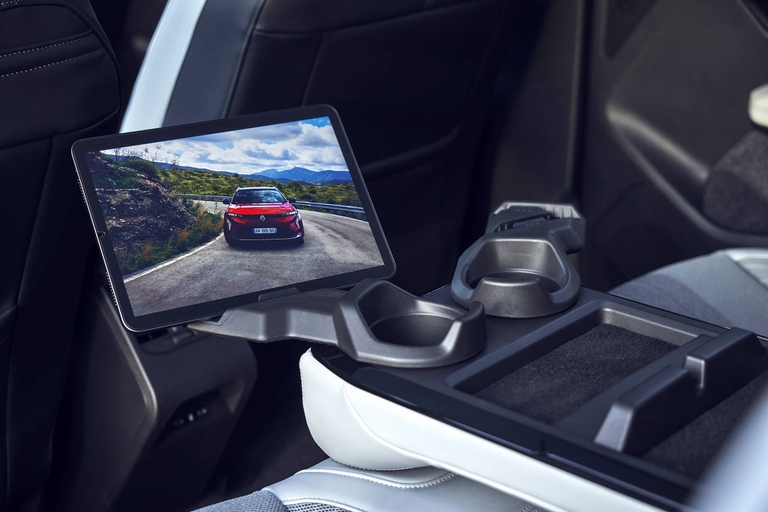
The 7 kW charger weighs on charging times
We tried the Scenic E-Tech Electric in the version 160 kW (220 horsepower), equipped with a battery 87 kWh, compatible with both direct current (DC) fast charging from charging stations and alternating current (AC) typical of home charging, with notable differences in terms of times;to give you an idea, taking advantage of fast top-ups on the motorway, in 30 minutes of charging you could recover up to 2 hours of battery life (with a charge of up to 150 kW), from the home outlet they can also be used further 40 hours for a "full"... The choice to offer is a bit perplexing only the 7 kW AC charger is standard;for the 22 kW one (present on cheaper models such as the Zoe) you pay extra.
Alternatively, Scenic is also available in the version with electric motor 125 kW (170 horsepower) and 60 kWh battery:electric range also makes a difference, up to 625 kilometers in the most powerful version, up to 430 in the less powerful one (both data refer to the "declared" and, to clarify, the 625 kilometers become 370 if you travel only on the motorway, typically the most unfavorable terrain for the electric car because in the absence of braking or deceleration, energy is almost never recovered while driving).
Up to 70 commands to manage the car with your voice
“Driving an electric car has never been so simple,” explains a Renault note.True or false?As usual, the truth lies somewhere in the middle.Certainly, the Scenic E-Tech Electric, thanks to the support of Google Maps, simplifies the journey, thanks to the possibility of planning a route.In practice, you enter the destination from the large touch display, and the system establishes the best route, tells you the fastest charging station, and considers your preferences.I am up to 70 voice commands to manage on-board controls, including the transparency of the glass roof.
And in the event of a change of route (an accident, a sudden detour) or a new stage, a column occupied (or worse, broken...), the system shows you the alternative route.Reassuring.And if you are one of those who always want to be sure you have some autonomy to spare, you can ask the system to set a minimum charge level to keep at your destination.And if that's still not enough, from your smartphone you can simulate the journey from the sofa at home, and then send it directly to the car.
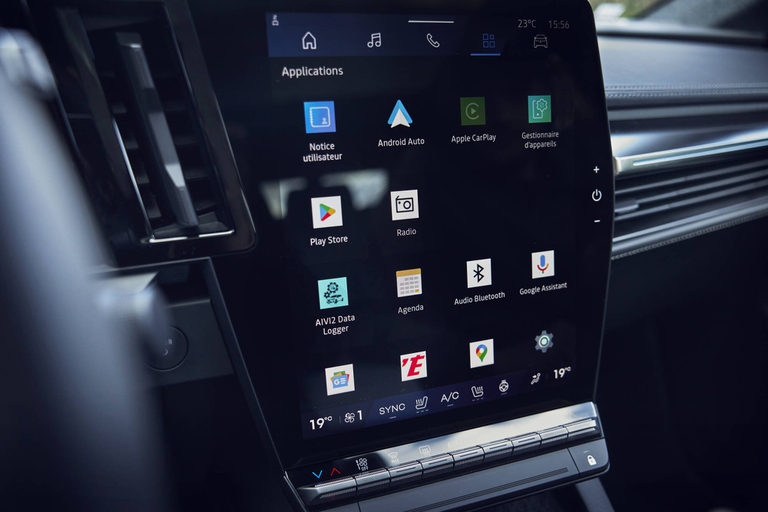
How artificial intelligence can increase security
Is called proactive security the one that artificial intelligence can add.A concept which on the Scenic E-Tech Electric translates into a system which, from the central display, provides a series of suggestions;close the windows so as not to nullify the effect of the air purifier (which filters odors and pollutants), activate the demisting of the windows if they are fogged up (it is not uncommon to see cars still traveling with condensation on the windows), change driving mode if the one selected is not the best for the route.Added to this is what they call in Renault Safety coach which analyzes driving behavior and suggests actions that can improve efficiency and safety.
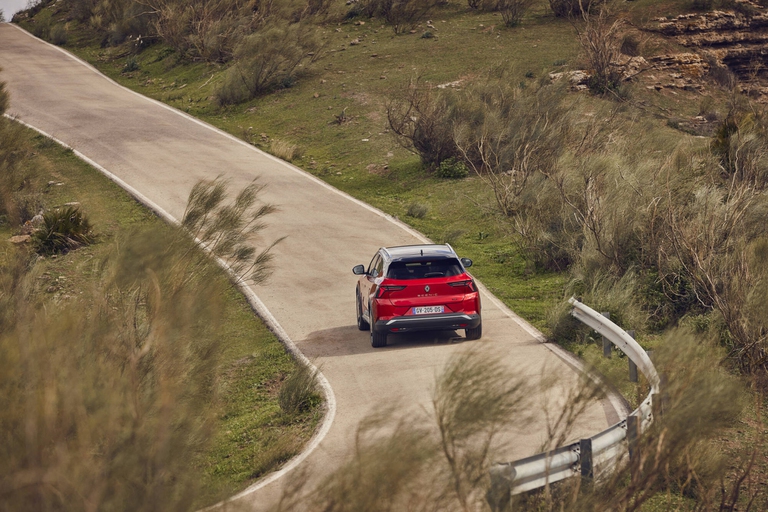
Silent, agile.In a word, easy
And now we come to a portrait of the Scenic E-Tech Electric on the road.Silent (not only because it is electric, but because it also filters external noise well), comfortable, agile.In one word, easy.The electric Scenic seems to have found the right compromise between driving pleasure and serenity.A result achieved by enhancing comfort, with a surprising mix of agility in maneuvers and pleasantness in the curves.The 220 horsepower are also too many, it is better to focus on the 160 version and also access the incentives.THE 4 levels of regenerative braking they allow, by acting on the paddles on the steering wheel, to choose how much energy to recover when you lift your foot from the accelerator;the higher the level, the more energy it generates, the more the car slows down on its own, without braking.In terms of efficiency, the heat emitted by the battery and engine is recovered during driving (or after charging) and used to heat the passenger compartment thanks to a heat pump, standard on all versions.
The rest depends on which of the 4 driving modes you choose:Comfort, Sport, Eco and Perso, the meaning of which is easily understood (and the effect clearly noticeable while driving, with variations in power delivery and steering sensitivity) and as these changes the interior lighting also changes (well 48 colors for the dashboard, door panels and dashboard);if you then believe the “chromotherapy”, the internal lighting can automatically vary over the 24 hours, with colder tones during the day and warmer tones at night.
